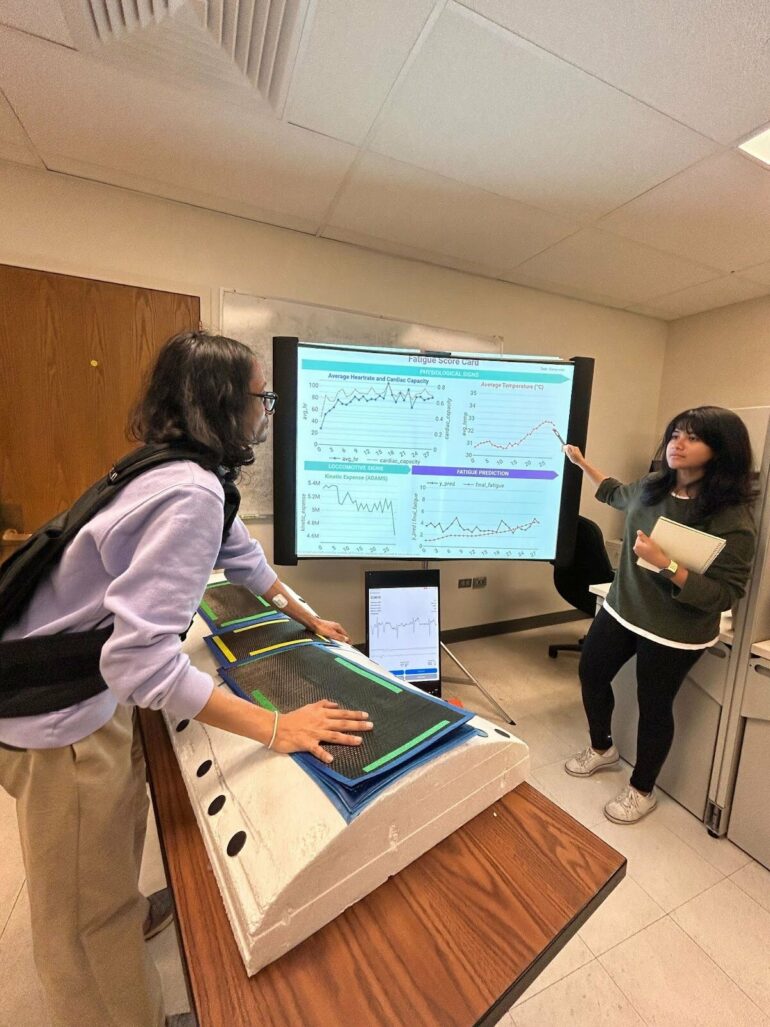A system of wearable sensors and machine learning can continuously monitor factory workers for signs of physical fatigue. Factory work can be physically strenuous, and a safe and ethical workplace must ensure that workers do not become overly fatigued, which can increase the risk of injury and accident, cause chronic health problems, and also impair performance.
A system designed by Ping Guo, Qi Zhu, and colleagues measures heart rate, heart rate variability, skin temperature, and locomotor patterns from six locations on the torso and arms. There are no broadly accepted biomarkers or metrics for fatigue, so the authors calibrated their measurements to self-reported perceived exertion, on a 0–10 scale. The results are available in PNAS Nexus.
Forty-three participants, ages 18–56 years old, replicated two strenuous manufacturing tasks: composite sheet layup and wire harnessing, while wearing weighted vests to exaggerate the induced fatigue and simulate levels of fatigue that might be felt at the end of a full shift. Participants reported fatigue levels at multiple time points throughout a roughly hour-long data collection period.
A machine learning model was able to use data from participants to predict fatigue levels in real time. The best mix of physiological signs to use to predict fatigue varied across individuals, but some universal trends were identified. The movements of the non-dominant arm universally betrayed fatigue. Whereas complex tasks such as wire harnessing required multiple modalities to capture fatigue.

In this image, Payal Mohapatra and Vasudev Aravind, co-first authors of the article, are demonstrating their research on fatigue prediction in manufacturing workers. Vasudev (on the left) is wearing sensors (ADAM for motion and ANNE for heart rate and temperature) while performing a task that simulates industrial activity. Payal is explaining the predicated activity data displayed on the larger screen, which integrates movement and physiological signals into a machine-learning model. © Payal Mohapatra and Vasudev Aravind
The authors also tested their system at large manufacturing factories in the US Midwest and West Coast. Real factory workers were somewhat reluctant to report that their work tasks were fatiguing and sweat made the adhesion of the sensors tricky. Despite these challenges, workers rated the system as unobtrusive and easy to use.
According to the authors, the technology could improve factory safety, mitigate risks, and empower workers.
More information:
Payal Mohapatra et al, Wearable network for multilevel physical fatigue prediction in manufacturing workers, PNAS Nexus (2024). DOI: 10.1093/pnasnexus/pgae421
Provided by
PNAS Nexus
Citation:
Wearable sensors can continuously track fatigue in factory workers (2024, October 15)



